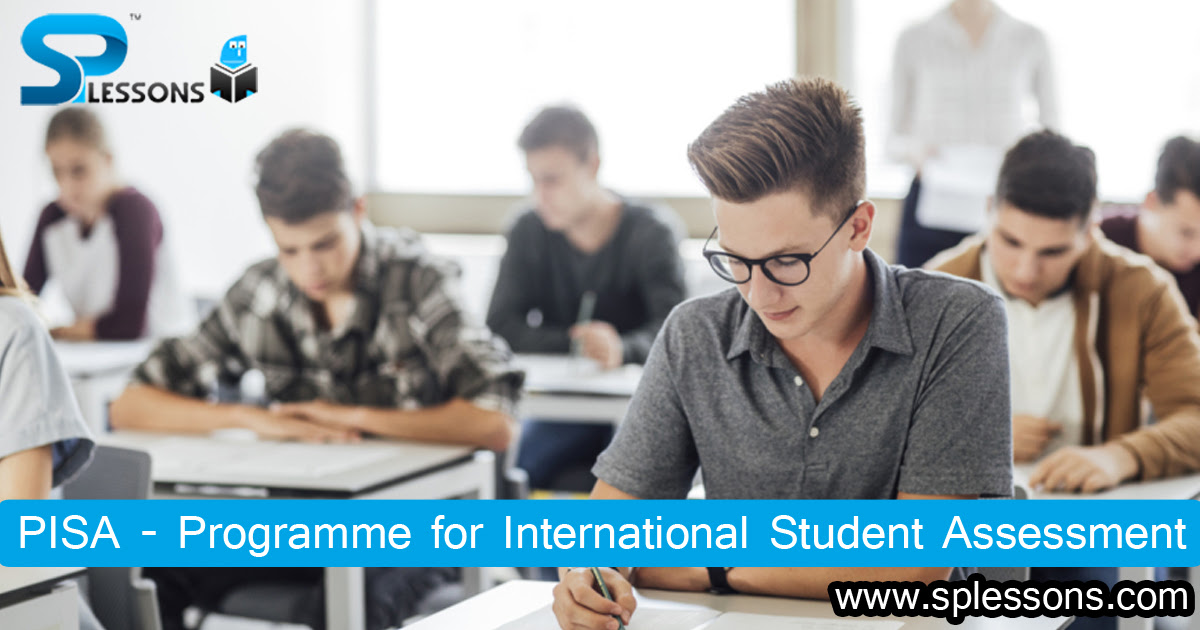 Introduction
Introduction
PISA (Program for International Student Assessment), first performed in the year 2000, is an initiative by Organization for Economic Co-operation & Development (OECD) to enhance the education system of its member and non - member nations and economies by assessing the level of education in these nations through the global assessment conducted. The various parameters that are computed using the PISA test help in knowing the major causes for the aberrations in the education system a particular nation and ensures in the research to develop the educational system of the nation. Program for International Student Assessment primarily measures Problem Solving & Cognition of the students by testing their scholastic performance on Mathematics, Science& Reading.
OECD aims to provide through PISA, a comparable data to enable countries to improve their education policies & outcomes. Thus, PISA is considered as one of the assessments used in the process of education policy making at both national and international levels, i.e. "PISA can offer insights into sources of variation in performances within and between countries."
| PISA stands for | Program for International Student assessment |
| Founded by | OECD (1997) |
| Member nations | 79 government owned departments of education |
| Current Chair | Michele Bruniges |
| Way ahead | PISA 2021 |
 PISA
PISA
Every year, PISA comes out with a new theme for the exam. For the year 2018, PISA had a theme for checking the reading skills of the young students of its participating nations. For the year 2021, PISA’s main focus is on checking the creative skills of the children in the field of mathematics. Checking the student’s readiness to face real-life challenges and problems, PISA focuses more on the skills and tests the basic understanding of the subject’s fundamentals.
In 2024 PISA, it will be a year of science and you must be wondering about what PISA shall focus on? Well, it is in a foreign language. In this era of globalization, three subjects are of high importance, irrespective of the type of economy. They are science, maths and reading skills, which must remain updated.
Research has gone ahead to show that PISA scores have remained constant for a long time for the US, but emerging nations have shown a rise in the PISA scores. And who ranks the PISA rankings, 2018? Well, if you are guessing the USA, then we are sorry to disappoint you, but China ranked first in the PISA rankings, 2018.
The exam is conducted by the OECD once in three years. PISA was first conducted in the year 2000, and the next PISA is going to be conducted in the year 2021.
In the year 2018, PISA was topped by students from China who scored level 4 in all the three subjects. Unlike the other exams, PISA doesn’t test the score based on your memorization skills, but the questions test the knowledge and the critical thinking of the students.
The scores for the top 5 nations in the PISA rankings are tabulated below:
The average score in the Program for International Student Assessment exam lies somewhere around 487 for reading skills and 489 each for mathematics and science.
| Country | Reading | Mathematics | Science |
|---|---|---|---|
| China | 555 | 591 | 590 |
| Singapore | 549 | 569 | 551 |
| Macao | 525 | 558 | 544 |
| Hong Kong | 524 | 551 | 517 |
| Estonia | 523 | 523 | 530 |
Participation of India in PISA has always been a controversial event. In the PISA event of 2009, India was involved in the PISA assessment, conducted by the OECD. Indian school from Himachal Pradesh was a part of the 2009 PISA assessment. India ranked at the 72nd position in the PISA assessment In the year 2009.
Eventually, India pulled out of the PISA assessment test citing reasons for differences between social and cultural aspects regarding the questions which were asked in PISA assessment.
To understand the benefit of the PISA assessment for schools, we need to first understand the benefit of PISA assessment towards education. The main purpose of the PISA assessment is to research the education systems and policies across various nations to uphold the level of education across the nations.
The importance of PISA can be cited as the driving force behind tapping the important drivers and education models across the globe and help the aspiring nations to emulate similar models.
For the schools and nations, PISA tests act as a driver to asses their grey areas and compare their education status with respect to the rest of the globe. They can find out measures to improve as well as bring about relevant changes. Education of a nation brings forward the economic prosperity, thus PISA ensures the right path for the same.
The rapidly changing demands and requirements of the best jobs in the world no more require the traditional methods of teaching and knowledge. It requires individuals who are critically sharp and creative in their approach. Nonetheless, PISA assessment helps in plotting the following data and analyzing them to the best.
PISA assessment has shown that schools across the OECD nations are yet to adapt to the required level of education, thus it is pushing their economies more backward. Analysis has also proven that education systems that have improved with time have shown similarities in their education models among themselves.
PISA assessment also enables the schools to set a standard to compare their metrics against. Without having a global benchmark, it might be difficult for the education systems to know about the right changes to bring about in their education systems, such as the inculcation of innovation and creativity and the shift from bookish knowledge. Though emulating the US could be a solution, yet PISA assessment ensures to know about the average scores in different categories, thus ensuring them to target for the benchmark scores.
The procedure of the PISA test is mentioned in steps as below:
- From the list of the participating countries, a list of selected schools is sent by the nations for the PISA test.
- The test revolves around testing the analytical and reasoning skills of the students and not around the memorization of the data.
| Section | Number of questions | Timing |
|---|---|---|
| Science | 184 | The cumulative time of 120 minutes |
| Reading | 103 | |
| Mathematics | 81 | |
| Problem Solving | 117 | |
| Financial literacy | 43 |
Though PISA has been kept as a standard measurement for most of the countries, the critics of PISA assessment have some really valid points which make their argument stronger:
A narrow spectrum of the students: PISA assessment looks into a narrow bandwidth for the assessment of the students. As it measures across the 500 parameters, it only selects a handful of students as its sample and randomly selects 500 schools per nation, which makes the data very skewed. The long term goals of the educational structure are not taken into account. Ignorance towards the intangible factors like student engagement and positivity are the biggest drawbacks of the PISA exam.
Ignorance towards special needs: The schools supporting the special needs students are ignored as PISA doesn’t account for such schools. Even the indigenous schools are not accounted for, which makes PISA assessment very biased, according to some researchers.
Socio-cultural diversity: It is one of the major problems which were even faced by Indian students back in 2009. Avocado and mango are completely different fruits, yet the difference is not known to an Indian 15-year-old student as avocado is not a commonly used fruit in India as much as it is in the USA or other Western nations.
Scientific disparity: Research has proven that high scores in the PISA assessment test are negatively related to the inquiry-based education system. Thus, PISA assessment fails in encouraging inquiry-based learning among the nations, which is a required trait in this era of scientific dominance.
PISA assessment has been in the news recently for a wide number of reasons. Let us enlist them one by one:
India and PISA: India had backed out of the PISA assessment back in 2009 due to various socio-cultural reasons. Off-late, India had made efforts in trying to resume the relations with the OECD and participate in the PISA assessment. The latest news that has comes around the corner is that India is looking forward to being a part of the PISA assessment 2020 onwards, which ensures OECD to make certain modifications in the test, language to eliminate the socio-cultural divide.
China ranks first: With the PISA assessment results out in the open, China has defeated Singapore to rank in the first position in the PISA rankings. The four regions of China have outperformed the other regions which were economically in a better position than them.
The US worries deepen: Slumping from the top to an average score in the PISA rankings, the USA is facing certain major challenges when it comes to the PISA scores. The scores have sowed the seeds of doubts in the educational system of the USA. What is more disappointing, is that the lower 10 percentile of the US test-takers has been grounded badly. The gap between the best and poor performers has widened, which has crept in the mediocrity in the US education system.




